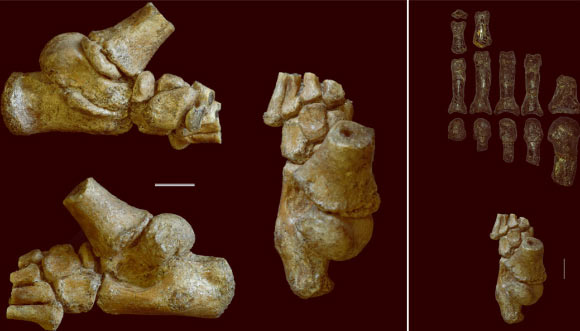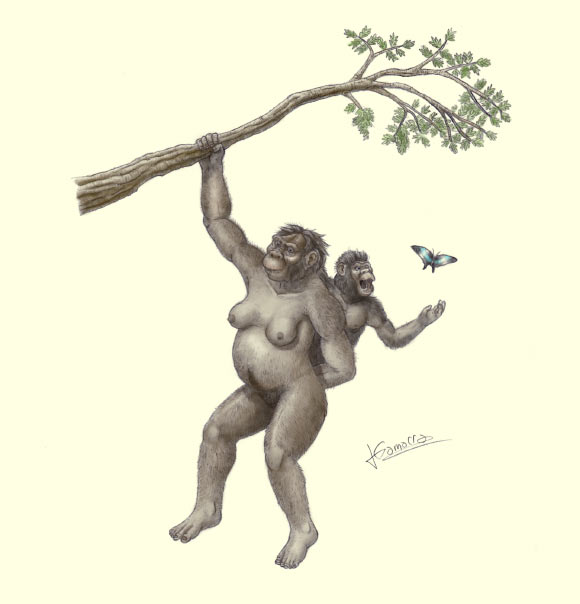A nearly complete foot of Australopithecus afarensis, a hominid species that lived between 3.85 and 2.95 million years ago, from Ethiopia has several ape-like characteristics that could have aided in foot grasping for climbing trees. The finding, reported in the journal Science Advances, challenges the long-held assumption that Australopithecus afarensis was exclusively bipedal (using only two legs for walking).
“For the first time, we have an amazing window into what walking was like for a 2.5-year-old, more than 3 million years ago. This is the most complete foot of an ancient juvenile ever discovered,” said Dr. Jeremy DeSilva, of Dartmouth College.
The tiny foot, dubbed DIK-1-1f, is part of a nearly complete 3.32-million-year-old skeleton of a young female Australopithecus afarensis discovered in 2002 in the village of Hadar in the Dikika region of Ethiopia by University of Chicago’s Professor Zeresenay Alemseged, senior author of the new study.
“Placed at a critical time and the cusp of being human, Australopithecus afarensis was more derived than Ardipithecus (a facultative biped) but not yet an obligate strider like Homo erectus,” Professor Alemseged said.
“The Dikika foot adds to the wealth of knowledge on the mosaic nature of hominin skeletal evolution.”

Australopithecus afarensis juvenile foot: DIK-1-1f shown in (clockwise from top left) medial, dorsal, and lateral views; to right, dorsal view of DIK-1-1f and the foot of adult Australopithecus afarensis. Scale bars – 1 cm. Image credit: DeSilva et al, doi: 10.1126/sciadv.aar7723.
In studying the remarkably preserved anatomy of DIK-1-1f, the researchers strived to reconstruct what life would have been like years ago for this toddler and how our ancestors survived.
They examined what the foot would have been used for, how it developed and what it tells us about human evolution.
The fossil record indicates that these ancient ancestors were quite good at walking on two legs.
“Walking on two legs is a hallmark of being human. But, walking poorly in a landscape full of predators is a recipe for extinction,” Dr. DeSilva said.
At 2.5 years old, the Dikika child was already walking on two legs, but there are hints in DIK-1-1f that she was still spending time in the trees, hanging on to her mother as she foraged for food.
Based on the skeletal structure of the child’s foot, specifically, the base of the big toe, the kids probably spent more time in the trees than adults.
“We discovered that this infant possessed many of the structures necessary to walk on two legs that have been found in adult specimens, but it also retained a convexity of the medial cuneiform — a bone important for joint movement, such as that involved in climbing — into adulthood,” the scientists said.
“This evidence of increased mobility of the toe is an ape-like pattern that is suggestive of a selective advantage of this trait and which offers new insights into the evolution of bipedality.”
“If you were living in Africa 3 million years ago without fire, without structures, and without any means of defense, you’d better be able get up in a tree when the Sun goes down,” Dr. DeSilva said.
“These findings are critical for understanding the dietary and ecological adaptation of these species and are consistent with our previous research on other parts of the skeleton especially, the shoulder blade,” Professor Alemseged said.
_____
Jeremy M. DeSilva et al. 2018. A nearly complete foot from Dikika, Ethiopia and its implications for the ontogeny and function of Australopithecus afarensis. Science Advances 4 (7): eaar7723; doi: 10.1126/sciadv.aar7723








